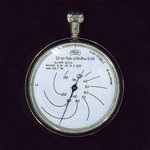b17sam
Airman
Can anyone come up with an answer to a problem that has that has vexed me since 1944? I've had wild guesses, improbable theories, but zip that rings true.
Problem: What is the elapsed time for an 88 flak shell to rise to 25000 feet? Educated guesses accepted.
Problem: What is the elapsed time for an 88 flak shell to rise to 25000 feet? Educated guesses accepted.

